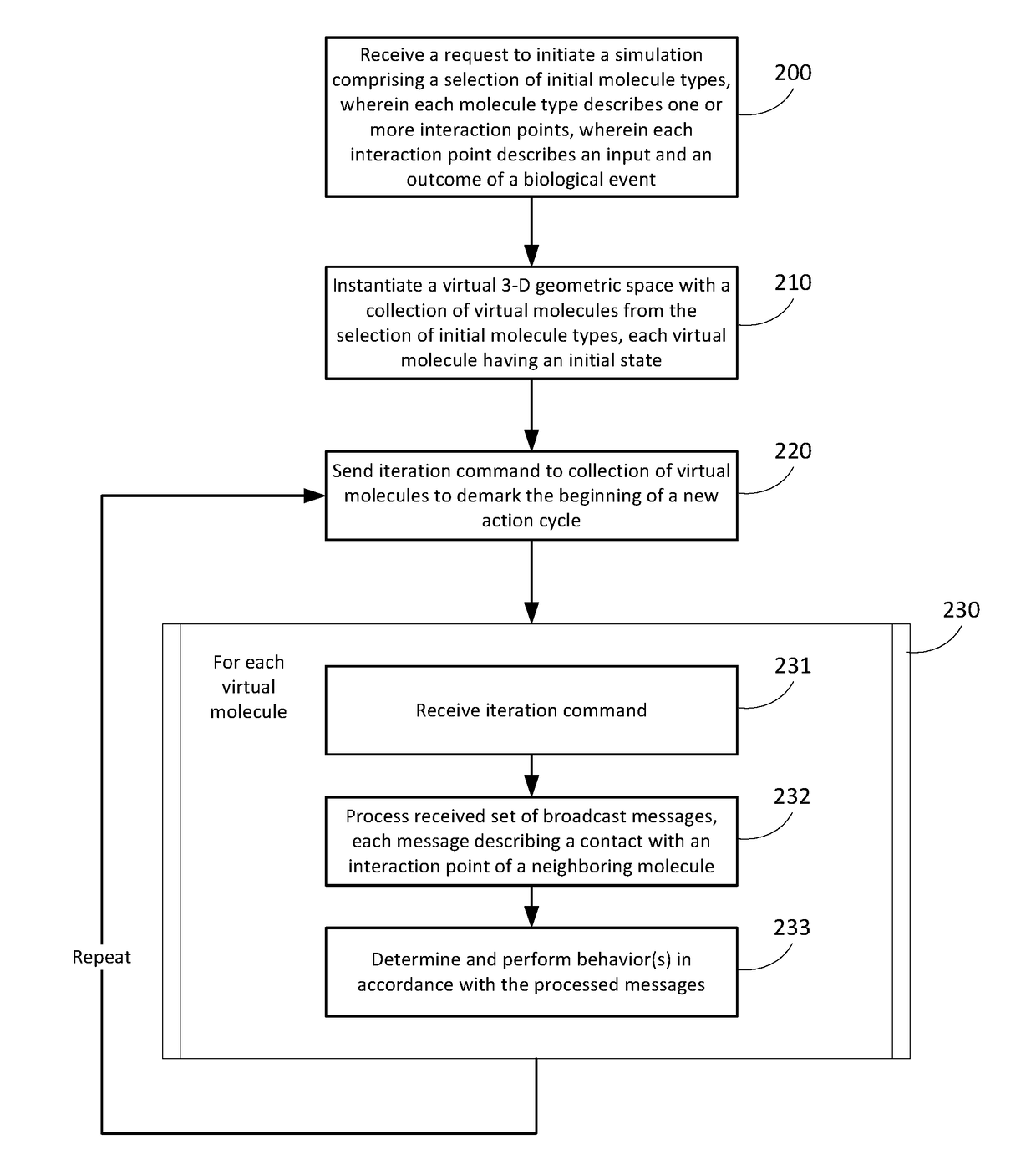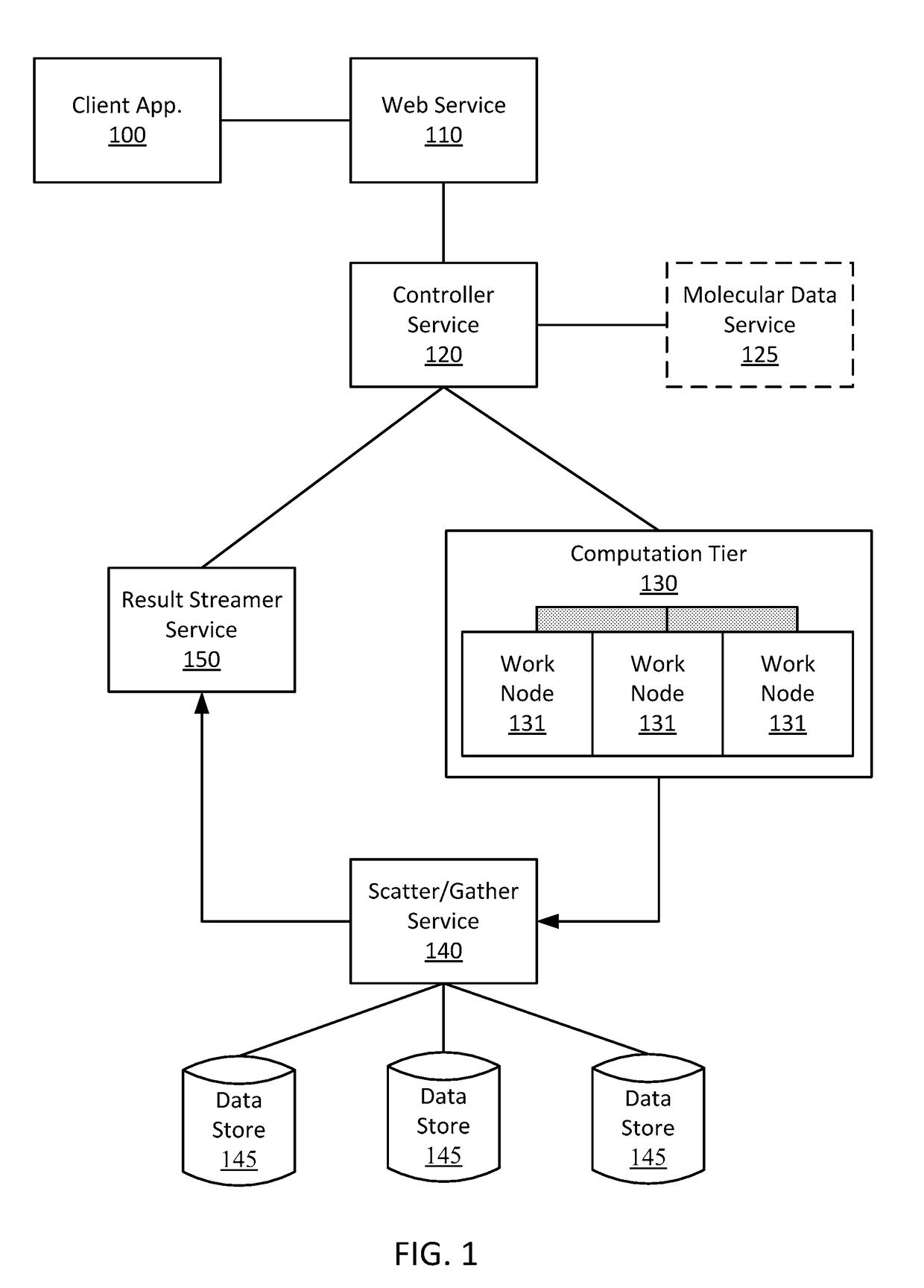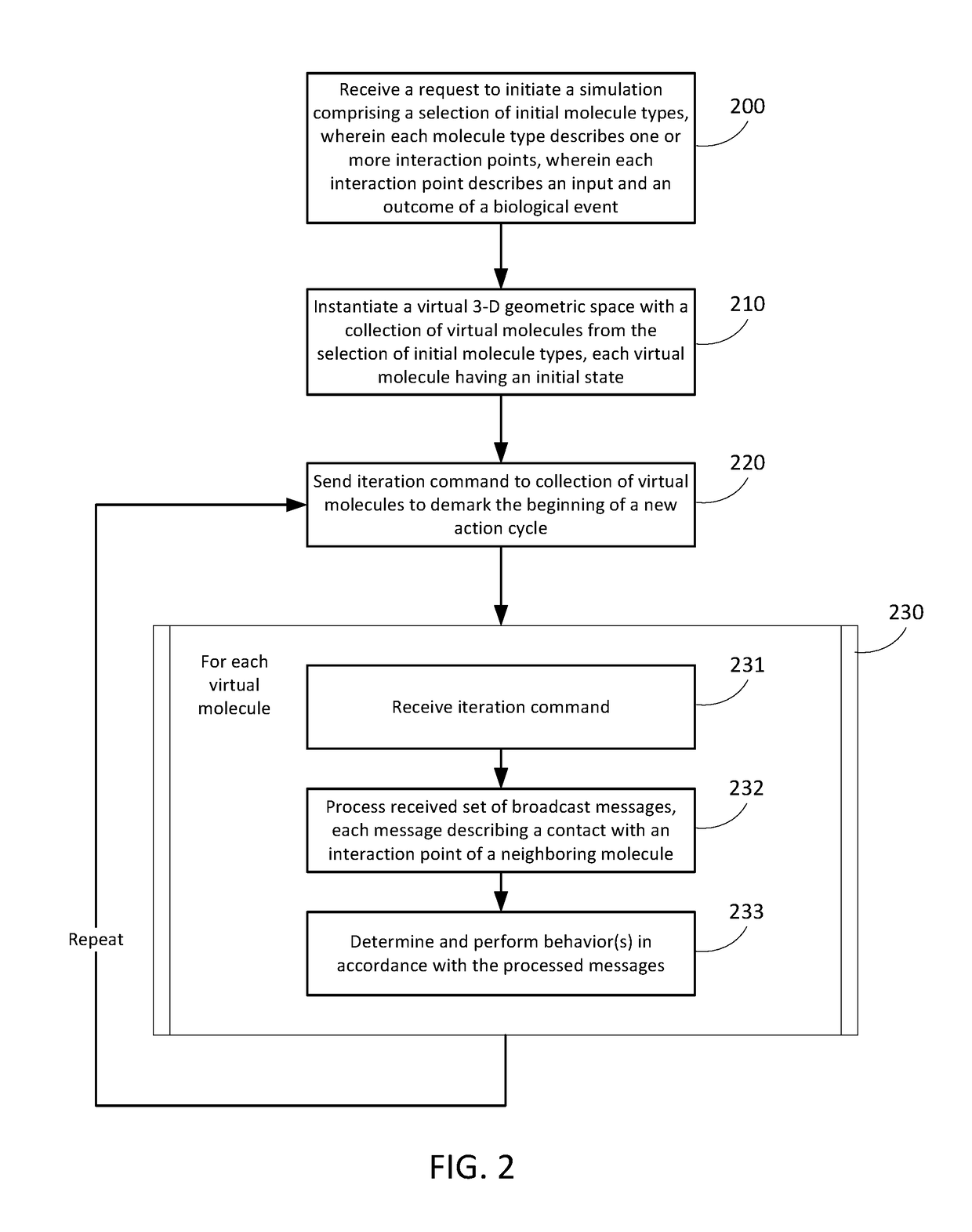Simulation environment for experimental design
a simulation environment and experimental design technology, applied in the field of simulation environment for experimental design, can solve the problems of high failure rate, large growth in biological research, especially in the field of neuroscience, and limited neuroscientists by the availability of computational tools
- Summary
- Abstract
- Description
- Claims
- Application Information
AI Technical Summary
Benefits of technology
Problems solved by technology
Method used
Image
Examples
embodiment 1
[0096] A method for enabling a simulation environment for experimental design, the method comprising:
[0097]receiving a request to initiate a simulation of a biological model, wherein the request comprises a selection of initial molecule types, wherein each molecule type describes one or more interaction points, wherein each interaction point describes an input and an outcome of a biological event;
[0098]instantiating a virtual three-dimensional (3-D) geometric space with a collection of virtual molecules from the selection of initial molecule types, wherein each of the virtual molecules comprises an initial state;
[0099]sending a periodic iteration command to the collection of virtual molecules, wherein each periodic iteration command demarks the beginning of a new action cycle;
[0100]in response to receiving the periodic iteration command, each of the virtual molecules:[0101]processes a received set of broadcast messages, wherein a broadcast message in the received set describes a con...
embodiment 2
[0113]Embodiment 3. The method of embodiment 2, wherein the particular biological event is selected from a group consisting of activation, deactivation, binding, releasing, transforming, methylation, phosphorylation, ubiquitination, N-methylation, O-glycosylation, N-glycosylation, misfolding, truncation, degradation, and biological / chemical modifications affecting the structure (secondary, tertiary, or quaternary) of a molecule.
embodiment 4
[0114] The method of any preceding embodiment, further comprising storing, in a data store, a current state of the simulation of the biological model for the new action cycle.
PUM
 Login to View More
Login to View More Abstract
Description
Claims
Application Information
 Login to View More
Login to View More - R&D
- Intellectual Property
- Life Sciences
- Materials
- Tech Scout
- Unparalleled Data Quality
- Higher Quality Content
- 60% Fewer Hallucinations
Browse by: Latest US Patents, China's latest patents, Technical Efficacy Thesaurus, Application Domain, Technology Topic, Popular Technical Reports.
© 2025 PatSnap. All rights reserved.Legal|Privacy policy|Modern Slavery Act Transparency Statement|Sitemap|About US| Contact US: help@patsnap.com



